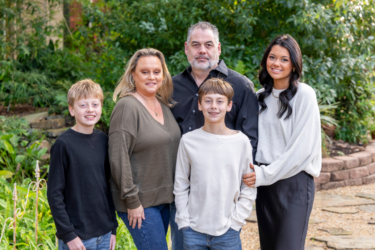Summer camp is a win-win situation for families. It gives parents the child-free time they need to work or care for younger children, while keeping their older children occupied with fun activities. The only disadvantage is the cost. According to the American Camp Association, the average cost of a week of day camp is $304.
If you are looking for a more budget-friendly way to achieve the same benefits that a day camp provides, you might want to consider a progressive neighborhood camp. Other than camp supplies, the only cost for a neighborhood progressive camp is the parents’ time each day.
The parent counselors take turns providing one hour of structured entertainment in the form of games, crafts, and other activities. When the hour is up, the children move onto the next house, leaving that parent the rest of the time to do their work child free.
How it works: Choose the number of participants based on the number of children and their ages. The number of families, not the number of children, will determine how long your camp is each day. For example, if you have five families, your camp is five hours long. After a parent counselor finishes her hour, she can help the kids move to the next house.
Planning: Choose the activities that you will include in your camp. Some suggestions include outdoor games, arts and crafts, music and dance, gardening, cooking and baking, science projects, storytime, and of course, lunchtime. Other options include teaching a new skill like how to sew on a button or inviting a guest speaker. If your group is small, you might also consider a field trip.
Parent camp counselors can choose which activity they host based on their skill level or tolerance for mess. Using a daily theme for your camp will help to tie the activities together. Theme ideas include Pajama Day, Beach Party, Superhero, Patriotic, Decades Day, Sports Jersey Day, and Wacky Wednesday. Work as a group to determine a budget after factoring the number of children and the supplies needed for each activity. An example itinerary for a Wild West theme can be found below.
Keep the costs down: Find craft supplies online at Oriental Trading, which is a goldmine for inexpensive crafts and prizes. Instead of serving lunch for a large group, consider having each child bring a sack lunch.
If you plan to send the kids home with a trinket each day, consider something reusable like relay race water bottles from the dollar store. Other inexpensive ideas include a DVD of the music video they made or an egg carton full of the seedlings they planted.
Putting it all together: All the children will meet at the first house at the start of camp. The camp counselor should be prepared to start the activity as soon as the kids arrive to his or her home. Each session should end 5-10 minutes before the next hour so the counselor can walk the kids to the next house. At the end of the day, parents will pick up their child at the last house.
Capture the memories: Take a lot of pictures of the kids doing each activity at camp. You can find inexpensive photo booth printouts online and on Etsy or candid snapshots of the kids in action. Make a slideshow of the photos to share with the campers on the last day and give everyone a copy.
The best thing about a progressive day camp is that you can host a weekly camp or just one day each week for the whole summer. Unlike other camps, these parents will be a part of their child’s camp experience, an advantage that is priceless. ■
Example Progressive Camp
Today’s Theme: Wild West
9-10 a.m.
Arts & Crafts at Smith House
Make marshmallow shooters
10-11 a.m.
Cooking and Baking at Yu House
Make homemade ice cream
11 a.m.-noon
Outdoor games at Johnson House
Play horseshoes, water gun shooting gallery, rope the horse, sack races
Noon- 1 p.m.
Lunch and Storytime at Brown House
Serving wagon wheel pasta, pigs in a blanket, and homemade ice cream
Book: Cowboy Camp by Tammi Sauer
1-2 p.m.
Music and Dance at O’Malley House
Learning to square dance





